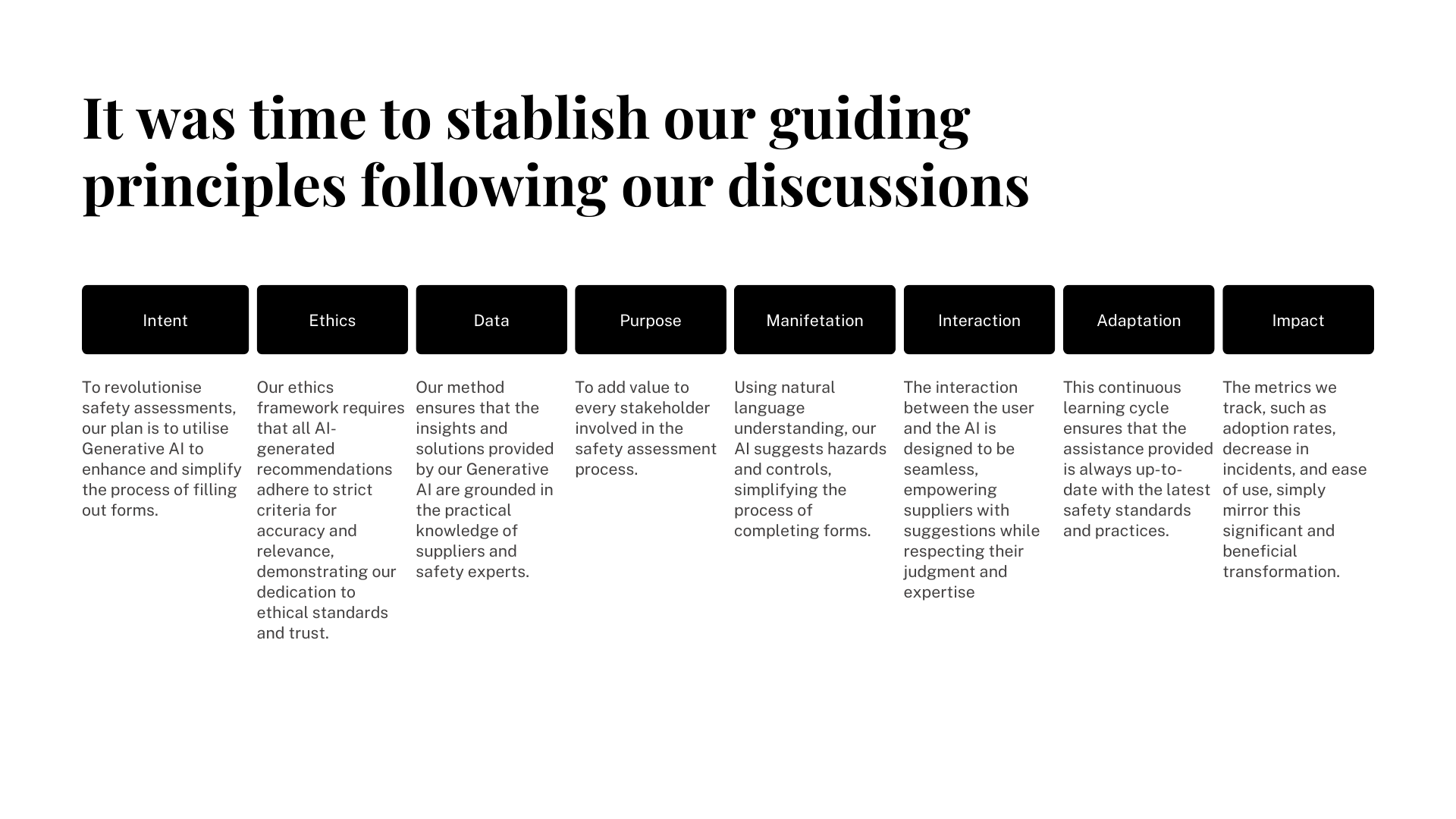Leverage AI to not just respond to accidents, but prevent them.
September 2023 - January 2024 (Beta release)
The Team and Collaboration
Facilitating collaboration across different time zones was crucial. I emphasised a strong focus on teamwork, ensuring all voices were heard and expertise was leveraged effectively.
Senior UI designer
Tech lead
Product manager and product owner
Front-end and back-end engineers
Safety experts
Executive team
The Challenge
In the high-stakes world of supply chain risk management, where a single lost-time injury costs an average of $35,000, Avetta faced a critical challenge: How could we leverage cutting-edge technology to prevent workplace accidents, not just respond to them?
The Goal
Generative AI was new and the team was tasked to find opportunities to leverage Generative AI to solve a user problem. That would place us as the first in the industry platform with Generative AI. As the Senior Strategic UX Designer, I was tasked with pioneering a solution that would transform Avetta's approach to safety assessments and set a new industry standard.
The Vision
I envisioned an AI-powered Risk Advisor that would revolutionise safety assessments by:
Simplifying the process of completing complex safety forms
Providing real-time, contextual guidance to users
Enhancing overall workplace safety through predictive insights
This innovative solution would not only set Avetta apart in the market but also significantly improve user experience and safety outcomes.
Key Metrics
Why is this initiative is important to the business?
I created a SWOT analysis to show the importance of this project to the business.
The Journey
Immersive Research
To truly understand our users' needs, I pioneered on-site visits to client locations—a first for our product team. These visits provided invaluable insights into the business, users, and operational tools.
The impact of these insights was so significant that I was invited to the Houston Summit in the United States to share my findings with the executive team. This opportunity not only validated the importance of my user-centric approach but also set the stage for our AI-driven transformation, gaining crucial buy-in from top leadership.
Problem Identification
Through user feedback and on-site observations, we uncovered key pain points:
Contractors lacked safety expertise to complete forms effectively
Form creation and completion were time-consuming and error-prone
High rejection rates of submitted forms led to frustration and delays
"I spent hours filling out a form that didn't get approved. Crafting a form from the ground up? Tough stuff!" Rhonda - Supplier admin
Empathy Building
To help my team understand the emotional experience of form filling, I developed storyboards focusing on:
User emotions and thoughts
The potential role of AI
Maintaining trust throughout the process
This approach proved highly effective in building empathy and aligning the team's vision.
Journey Mapping and Data Strategy
We crafted comprehensive user journey maps to:
Identify key data collection points
Pinpoint opportunities for AI assistance
Ensure our AI recommendations were grounded in practical knowledge
This process was instrumental in shaping our data requirements and AI integration strategy.
The interaction Architecture
Consider how data will be sourced or created. Do we know enough about the user to assist them at every stage?
Guiding Principles Establishment
We often had to remind ourselves why we’re working on this project. So, we established key principles to guide our development:
UI Design and Prototyping
Idea Evaluation and Feedback
Testing with real users when they shouldn’t know anything about the project, or the business is hard BUT got me to focus on the core value of our solution.
I designed a non-branded UI and prototype to test. We got great feedback.
Looking Ahead
As we continue to innovate in the safety solutions space, our focus is on:
Refining and expanding the AI advisor's capabilities based on user feedback
Exploring additional touchpoints in the user journey where AI can add value. Currently working on leveraging AI in our Audit process.
Developing more sophisticated feedback mechanisms to accelerate AI learning and adaptation











